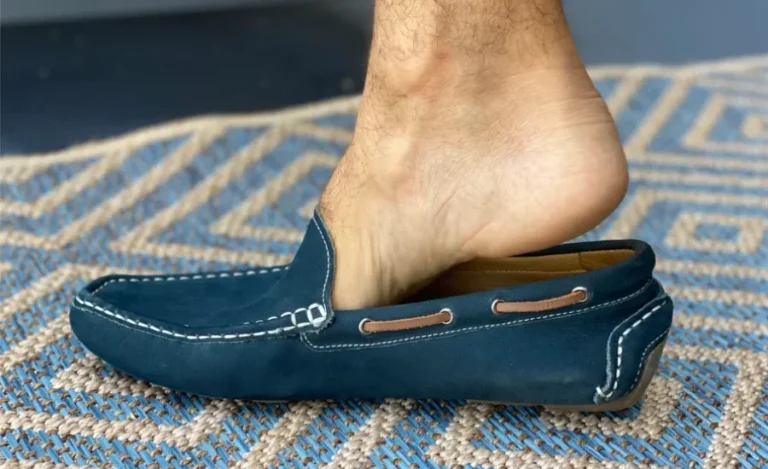Https://tanfacil.net/educacion/como-se-escribe-cabe-o-cave-2821.html: 10 Common Mistakes with Cabe and Cave and How to Fix Them
Https://tanfacil.net/educacion/como-se-escribe-cabe-o-cave-2821.html, The Spanish language is rich and diverse, offering a unique journey for its learners and enthusiasts. A common area of confusion involves the correct use of “cabe” versus “cave.” Despite their visual similarities, these terms are applied in distinct contexts and carry different meanings. This article will delve into the correct usage of “cabe” and “cave,” focusing on their grammatical roles, definitions, and providing practical examples. By exploring these aspects thoroughly, this guide aims to clarify these common points of confusion and enhance your understanding of Spanish grammar.
Spanish Grammar: Understanding the Difference Between Cabe and Cave

https://tanfacil.net/educacion/como-se-escribe-cabe-o-cave-2821.html, The Spanish language is rich in nuances that can challenge both native speakers and learners alike. One such complexity involves distinguishing between the verbs “cabe” and “cave.” Despite their similar spelling, these verbs have distinct meanings and uses, often leading to confusion. This guide will help clarify their differences, providing insights into their correct application and usage.
Meaning of “Cabe”
https://tanfacil.net/educacion/como-se-escribe-cabe-o-cave-2821.html, The term “cabe” is derived from the Spanish verb “caber,” which translates to “to fit” or “to have enough space.” In Spanish grammar, “cabe” is specifically the third person singular form of this verb. It is used to describe whether an object or concept can fit into a particular space or situation, whether physically or metaphorically. This form is crucial for conveying whether there is sufficient room or suitability for something to be accommodated or to be considered appropriate in a given context.
Examples of “Cabe” in Sentences

- En este bolso no cabe nada más.: This sentence translates to “This bag cannot accommodate anything else.” Here, “cabe” is used to indicate that the bag has reached its capacity and cannot hold any more items. This example illustrates the physical sense of fitting, where “cabe” refers to the limited space available in the bag.
- No cabe duda de que ella es la mejor candidata.: This phrase means “There is no doubt that she is the best candidate.” In this context, “cabe” is used figuratively to express a strong certainty or clear judgment about a person being the best choice. This demonstrates the figurative use of “cabe” to signify something that is beyond question or reasonable doubt.
Typical Uses of “Cabe”
- Spatial Fit: One of the primary uses of “cabe” is to describe whether an item physically fits within a specific space. For example, you might use “cabe” when discussing whether a piece of furniture can fit into a particular room or if a box can hold a certain quantity of items. This application focuses on the physical dimensions and capacity of objects.
- Figurative Fit: In addition to its literal use, “cabe” is also employed in a more abstract sense to indicate whether something fits within certain limits or exceeds expectations. For instance, when expressing a strong belief or certainty, as in the example “No cabe duda,” it conveys a sense of confidence or emphasis beyond just the physical aspect. This figurative use is essential for conveying nuanced ideas related to suitability, appropriateness, or clarity in various contexts.
Grammatical Differences
When examining the grammatical differences between https://tanfacil.net/educacion/como-se-escribe-cabe-o-cave-2821.html it’s essential to understand their distinct origins and uses. The verb “cabe” comes from “caber,” which translates to “to fit.” It is used in the third person singular form to indicate whether something can fit into a given space or be suitable in a particular context. For example, “cabe” is used when discussing if an object physically fits or is appropriate for a situation.
In contrast, “cave” is derived from the verb “cavar,” which means “to dig.” It appears in the imperative form, used for issuing commands or instructions related to digging. This form is direct and instructive, as seen in phrases that command someone to dig a hole or perform similar tasks. The use of “cave” is specific to giving orders or instructions involving physical or metaphorical digging.
Common Uses of “Cave”

https://tanfacil.net/educacion/como-se-escribe-cabe-o-cave-2821.html, The primary context for using “cave” is in giving commands or instructions about digging. For instance, when instructing someone to dig a hole, you would use “cave,” as in “Cave un hoyo aquí para plantar el árbol” (Dig a hole here to plant the tree). This command form is clear and direct, focusing on the action of digging.
Beyond literal commands, “cave” can also be used metaphorically to suggest a deeper investigation or exploration of a subject. In this figurative sense, it implies going beyond the surface to uncover more information or understand an issue more thoroughly.
Contextual Similarities
Both “cabe” and “cave” exhibit certain similarities in that they can be utilized in both literal and figurative contexts. Despite this, their core functions and applications are notably distinct.
The verb “cabe” pertains to the notion of fitting or suitability. It is used to describe whether an object or concept can physically fit into a given space or whether it is appropriate in a certain situation. For example, when discussing whether a piece of furniture can fit in a room or whether a statement is appropriate in a specific context, “cabe” is employed to address these concerns. This usage can be both literal, as in fitting an item into a space, or figurative, as in determining if an idea is reasonable or fits within a broader context.
On the other hand, “cave” is associated with the action of digging. It comes from the imperative form of “cavar,” which means “to dig.” This verb is used to issue direct commands related to the physical act of digging, such as instructing someone to dig a hole or a trench. Beyond its literal use, “cave” can also be applied in a figurative sense, where it implies delving deeper into a subject or conducting a thorough investigation. In this way, “cave” is connected to both tangible, physical actions and abstract processes of exploration or inquiry.
https://tanfacil.net/educacion/como-se-escribe-cabe-o-cave-2821.html, while “cabe” and “cave” share the flexibility of being used in different contexts, their primary actions and implications are quite different. “Cabe” is focused on the concept of fitting or appropriateness, whether in a physical or contextual sense, while “cave” is centered around the act of digging and exploring, whether literally or metaphorically. Understanding these distinctions is essential for accurate usage and effective communication in Spanish.
The Importance of Context in Spanish Grammar

https://tanfacil.net/educacion/como-se-escribe-cabe-o-cave-2821.html, Grasping the context in which to use “cabe” and “cave” is crucial for mastering Spanish grammar. The term “cabe” is associated with discussions about fitting or appropriateness, whether it’s about physical space or suitability in a broader sense. On the other hand, “cave” is related to commands for physical digging or metaphorical exploration. Misapplying these terms can lead to misunderstandings or confusion. Therefore, understanding their proper usage is essential for clear and accurate communication in Spanish.
Final Words
In the realm of Spanish grammar, understanding the differences between “cabe” and “cave” is essential for precise communication. “Cabe,” derived from “caber,” signifies the ability to fit or be appropriate within a given space or context, while “cave,” stemming from “cavar,” is used in commands related to digging, whether literal or metaphorical. Both terms, although similar in spelling, serve distinct purposes, emphasizing the importance of context in their usage. Mastering these nuances ensures accurate expression and avoids confusion in both everyday conversation and more complex discussions. To explore these concepts further, visit https://tanfacil.net/educacion/como-se-escribe-cabe-o-cave-2821.html.
FAQs
1. What Is the Primary Difference Between “Cabe” and “Cave” in Spanish?
The primary difference lies in their meanings and usage. “Cabe” is derived from “caber” and refers to the ability to fit or be appropriate, while “cave” comes from “cavar” and is used in commands related to digging.
2. When Should I Use “Cabe” in a Sentence?
You should use “cabe” when you want to express that something fits or is suitable within a particular context or space, either physically or metaphorically.
3. What Is the Origin of the Verb “Cave”?
“Cave” originates from the verb “cavar,” which means “to dig” in Spanish. It is typically used in the imperative form to issue commands.
4. Can “Cabe” Be Used in a Figurative Sense?
Yes, “cabe” can be used figuratively to indicate whether something is appropriate or suitable within a broader context, beyond just physical space.
5. How Do You Properly Use “Cave” in a Sentence?
“Cave” is used to give direct commands involving digging, such as in “Cave un hoyo aquí” (“Dig a hole here”).
6. Are “Cabe” and “Cave” Interchangeable?
No, “cabe” and “cave” are not interchangeable because they have different meanings and are used in different grammatical contexts.
7. Can “Cave” Be Used Metaphorically?
Yes, “cave” can be used metaphorically to suggest delving deeper into a subject or conducting a thorough investigation.
8. What Role Does Context Play in Using “Cabe” and “Cave”?
Context is crucial in determining the correct usage of “cabe” and “cave,” as each term applies to different situations and actions.
9. How Do You Distinguish Between “Cabe” and “Cave” When Writing?
Distinguishing between “cabe” and “cave” involves understanding their respective meanings—whether you’re discussing fitting or issuing a command to dig.
10. What Are Some Common Mistakes When Using “Cabe” and “Cave”?
Common mistakes include using “cabe” when a command is needed or using “cave” when referring to fitting or suitability. Understanding their distinct functions helps avoid these errors.
For a rich variety of topics and expert commentary, head to Brain Rusher.






